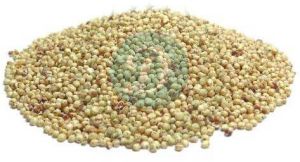
Sorghum
Get Price Quote
Sorghum (Sorghum bicolor), also known as milo, has a variety of uses including food for human consumption, feed grain for livestock and industrial applications such as ethanol production. The area planted to sorghum worldwide has increased by 66 percent over the past 50 years, while yield has increased by 244 percent. Around half of the sorghum produced is fed to livestock, and half is consumed by humans and used in other applications. Currently, most human consumption of sorghum occurs in low-income countries, while high-income countries typically use sorghum as a component in livestock feed or to produce ethanol. Sorghum is a versatile plant because it can tolerate drought, soil toxicities, a wide range of temperatures and high altitudes..

Ready to Eat Poha
Get Price Quote
Best Deals from Food Grains
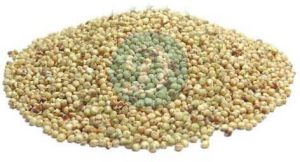
Sorghum
Get Price Quote
General Characteristics Sorghum (Sorghum bicolor), also known as milo, has a variety of uses including food for human consumption, feed grain for livestock and industrial applications such as ethanol production. The area planted to sorghum worldwide has increased by 66 percent over the past 50 years, while yield has increased by 244 percent. Around half of the sorghum produced is fed to livestock, and half is consumed by humans and used in other applications. Currently, most human consumption of sorghum occurs in low-income countries, while high-income countries typically use sorghum as a component in livestock feed or to produce ethanol. Sorghum is a versatile plant because it can tolerate drought, soil toxicities, a wide range of temperatures and high altitudes.. World market The United States is currently positioned as the number two producer and number one exporter of sorghum in the world market in 2010. In 2014 USA is a major producer of sorghum. World trade in sorghum is dominated by U.S. exports to Mexico. Other importing countries and regions include Japan, the EU, Africa, Colombia, Canada and Korea. Over the past 30 years, annual world production and the area planted to sorghum have both decreased marginally from 62.8 to 59.3 million metric tons and 44.5 to 41.9 million hectares. Yields in 1978–80 and 2008–2010 were virtually the same (1400 and 1412 kilograms per hectare). However, these global figures mask wide variations at the national level. In India, for example, between 1978 and 2010 the area planted to sorghum fell from 16. 1 to 7.7 million hectares and annual production fell from 11.4 to 7.0 million metric tons, but yields increased by 40% from 689 (in 1978–80) to 965 kilograms per hectare (in 2008–10). Sorghum Usage In many parts of the world sorghum has traditionally been used in food products and various food items; porridge, unleavened bread, cookies, cakes, couscous and malted beverages are made from this versatile grain. Traditional food preparation of sorghum is quite varied. Boiled sorghums are one of the simplest uses and small, corneous grains are normally desired for this type of food product. The whole grain may be ground into flour or decorticated before grinding to produce either a fine particle product or flour, which is then used in various traditional foods. Sorghum has unique properties that make it well suited for food uses. Some sorghum varieties are rich in antioxidants and all sorghum varieties are gluten-free, an attractive alternative for wheat allergy sufferers. Because of its neutral taste, sorghum absorbs other flavors well. For example, U.S. white sorghum has been exported to Japanese millers to be processed into flour. Japanese snack food processors have used the flour in research and recipe development, leading to commercialization of snack food products. It is anticipated that more white sorghum based products will debut soon both in Japan and in North America. Sorghum is also an important animal feed used in countries like the U.S., Mexico, South America and Australia. Good-quality sorghums are available with a nutritional feeding value that is equivalent to that of corn. Sweet Sorghum can be processed to further improve its feed value and techniques such as grinding, crushing, steaming, steam flaking, popping and extruding have all been used to enhance the grain for feeding. Conclusion Sorghum is one of the most drought tolerant cereal crops currently under cultivation. It offers farmers the ability to reduce costs on irrigation and other on-farm expenses. The International Water Management Institute (IWMI) warns that by the year 2025, 25 percent of the world's population will experience severe water scarcity. However, water productivity in both irrigated and rain-fed acres can be increased through the use of more water-use efficient crops, like sorghum.

Organic Kodo Millet
Get Price Quote

Maize
Get Price Quote
We are main supplier of this product.

Corn Grits
Get Price Quote
Corn Grits, Soya Lecithin, Potato Flakes, Maltodextrin Powder

Kodo Millet Seeds
85 - 90 Per Kilogram
50 Kilogram (MOQ)

Green Millet
Get Price Quote
We provide the indian origin green millet for cattle feed . packing : 15 kg or 50 kg bags .
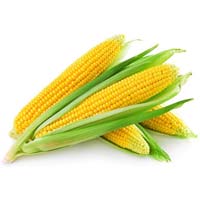
Yellow Maize
Get Price Quote
Feel free to approach us, if seeking for top-of-the-line quality Yellow Maize !With our wide connectivity, trustworthy shipping facilities, we are flexible in delivering the product basket to the clientele within the dedicated time. Indian yellow maize specification and verity available as per buyer request. Details : Packing - PP Bags, Jute Bags, Packaging - As per Buyers request Payment Terms - LC, TT MOQ - 25 T. Supply Capacity - 3000 to 10000 MT. Shipment Terms - FOB, CIF, CNF
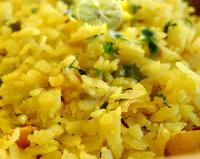
Instant Poha
Get Price Quote
We offer Instant Poha that is made from flattened rice. Instant Poha is an excellent option for breakfast or brunch. The Instant Poha, available with us, is very easy to cook and is highly nutritious. Just water is to be added and the contents of Instant Poha are to be heated. Enjoy delicious taste of Instant Poha in every spoonful.

Green Millet Seeds
Get Price Quote

Non Gmo Defatted Soya Flakes
Get Price Quote
Non Gmo Defatted Soya Flakes (Toasted) Introduction: Ambuja Defatted Soya Flakes (Toasted) is obtained from Soya bean seeds by the process of cracking, dehulling, flaking, extracting, desolventizing, toasting to get a flakes with creamish yellow color. Ambuja Defatted Soya Flakes (Toasted) is a high protein, low in fat products and is the simplest form of Soya protein. The protein content of the flakes is approx. 50%. The Soya Flakes contains high quality protein & is an excellent source of Iron Calcium & B-Vitamins. The only nutritive & functional protein is fully fat proof and its use in fortification of cereals. Applications The Ambuja Defatted Soya Flakes (Toasted) maintain the balance of essential amino Acid of the body and used in As a raw material for making Soya sauce. Fortification in Food & Pharmaceutical preparations, Weaning Foods.Calf Milk Replacement, Drink Mixes, Meat Sausages and Fermentation Media. Nutrient Carrier for Flavours and Vitamins & Imparts functional characteristics like emulsification, thickening, dispersibility & water binding. Specifications of De-Fatted Soya Flakes (Toasted) – Enzyme In-Active:

Maize
30 Per 90 Kilogram
For export as well as cattle feed. Wholesale only. The best maize in the country and we also entertain maize from across the globe.
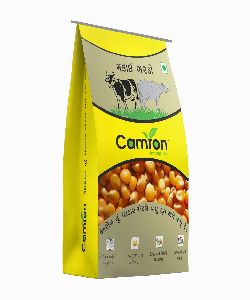
Maize Grit
Get Price Quote
Corn can be used in many different types of backgrounding and finishing diets, and it can serve as a supplement in forage-based diets for Milking animals. Compared with other feed grains, corn is lower in protein and slightly higher in energy. Corn contains approximately 70 percent starch on a dry-matter basis. Other important fractions in the corn kernel include protein, fiber and minerals.Features Free from calcite powder Premium quality imported minerals High energy & fibre Balanced ration Research based formula Safe & easy digestible Quality commitmentWe commit to following: More Total Digestible Nutrition Clean & fresh corn Premium minerals & mixtures Formulated by expert Nutritionist Safe & free from insects etc Environment friendly packing

Corn
Get Price Quote
Indian Yellow Corn/ Maize, which is procured from the hinterland of India; uniform grain sizes; excellent resistance to blight. The importance of maize or corn lies in its wide variety of applications besides serving as human food and animal feed. It is also a source for a large number of industrial products - maize corn, corn starch, corn OIL, baby corn, popcorn, dairy feed, poultry feed, piggery, agro-industries, and so on. Maize is now widely cultivated around the world, and a greater weight of maize is produced each year than any other grain. India, Asia's second-largest grower of maize after China, generally exports around two to three million tonnes of maize a year in global TRADE of about 90 million tonnes. Livestock feed-makers in Malaysia, Thailand and Indonesia are among the buyers of Indian maize as they seek substitutes to supplies from the U.S. and Latin America.

Hybrid Bajra
Get Price Quote
It is an early maturing (70-73 days) hybrid. It has very compact and cylindrical shaped long ear heads. Nandi-3 has yellow brown colour seeds similar to “Desi” Bajra. Its chapatti has sweet taste. Nandi-3 is tolerant to lodging and insect pests. Nandi-3 is suitable for both the seasons as well as winter season in Saurastra region of Gujarat State.

Yellow Corn Maize
Get Price Quote

Millets
Get Price Quote
Small Millets were a major constituent if crop diversity in India. The high nutritional compositions of these are now coming to light the world over. Millets have tremendous capacity to grow in dark rocky lands and also have high straw index which is beneficial for livestock.

Frozen Baby Corn
Get Price Quote
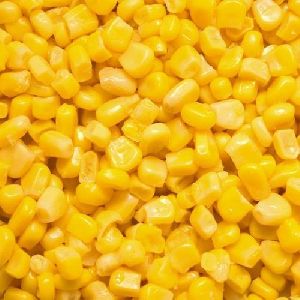
Frozen Sweet Corn
50 Per Kilogram
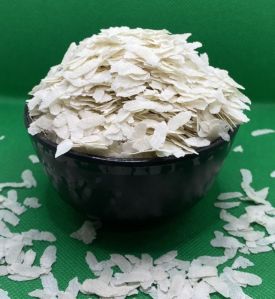
Premium Poha
33 Per Kilogram
10 Metric Ton (MOQ)
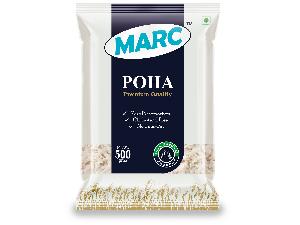
Poha - Flattened Rice
23 Per Pack
5 Ton (MOQ)
Marc Poha 500gm, Premium Quality, Zero Preservatives, Cholesterol Free, No Trans-fat, available in 500gm X 40 packs master bag.

Bajra
Get Price Quote

Yellow Maize Flour
Get Price Quote
We are supplier and exporter of this product.
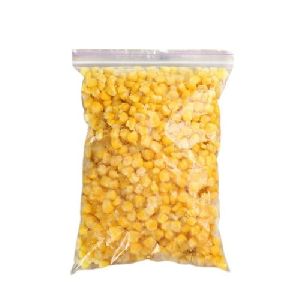
Frozen Sweet Corn
70 Per Kilogram

Wheat Bran
Get Price Quote
Wheat Bran in bulk quantities, our Cattle Feed Supplement cater to any and every health requirement of the Cattles. Clients also prefer our Cattle Supplement because of its hygienic and tamper proof packaging.
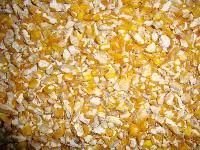
Broken Maize
Get Price Quote
Maize is one of the majorly produced & traded cereals worldwide. It is extensively used for both Human and Animal consumption. Indian maize production accounts nearly 50% for animal feed, 10% for starch industry and remaining for other uses. Recent increase in demand from Domestic & Overseas Poultry sector is increasing demand for animal grade corn from India.

Non Gmo Defatted Soya Flakes
Get Price Quote

Yellow Corn Maize
20,000 - 23,000 Per Metric Ton
100 Metric Ton (MOQ)
We are supplier and exporter of this product.

Maize
Get Price Quote
Castor Seed, Jeera